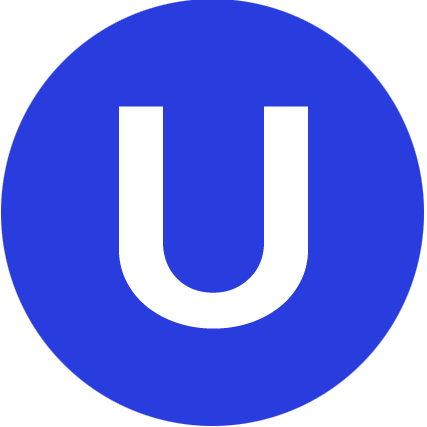
In today’s fast-moving financial landscape, where interest rates and inflation seem to shift with every new headline, many borrowers are feeling (understandably!) uncertain. But amid all the economic volatility, one borrowing option is quietly gaining ground: the home equity loan.
Home equity loans – particularly fixed-rate options – are proving to be a steady, strategic tool in an otherwise bumpy market. Whether you're consolidating debt, investing in home improvements, or simply looking for a more predictable borrowing experience, understanding what these loans offer can help you navigate 2025’s unpredictability with more confidence and control.
Fixed-Rate Home Equity Loans: Stability During Volatility
In a market where many lending products are shifting or becoming more unpredictable, fixed-rate home equity loans offer a rare sense of consistency.
Predictable Payments with Fixed Rates
Unlike adjustable-rate products, fixed-rate home equity loans lock in your interest rate from day one. That means no surprises, no fluctuating monthly payments, and no sudden cost spikes if broader market rates climb. For borrowers trying to budget in an inflationary environment, that predictability can be a game-changer.
Shelter from Market Swings
2025’s broader lending landscape is marked by shifting policies, rate uncertainty, and tighter credit conditions. Away from the turbulence, home equity loans offer a welcome sense of consistency. Their structure hasn’t changed much, and that’s part of the appeal – less fine print, fewer surprises, more stability.
Lower Risk, Lower Defaults
Historically, home equity loans have maintained lower default rates than credit cards or personal loans. That’s partly because they’re usually used for more deliberate, goal-based spending, such as renovations or debt consolidation. It’s also because homeowners are less likely to default on loans tied directly to their property.
Competitive Advantages Over Other Lending Options
When compared to other ways of borrowing in 2025, home equity loans stand out for their accessibility, cost-efficiency, and reliable terms.
Often Cheaper Than Personal Loans or Credit Cards
As interest rates on credit cards and unsecured personal loans climb, home equity loans are looking more and more attractive by comparison. Borrowers can typically access larger sums at significantly lower fixed rates – ideal for major expenses that would otherwise rack up costly interest.
More Accessible Than Cash-Out Refinancing
With mortgage rates now much higher than they were just a few years ago, many homeowners are reluctant to refinance their entire loan just to tap into equity. A home equity loan allows you to borrow what you need in 2025, without sacrificing the low rate you may have locked in years ago.
Provides Liquidity When Other Options Are Limited
In a tighter lending environment, personal loans and credit lines may be harder to come by – or they’ll come with steeper terms. A home equity loan can offer a dependable source of liquidity when other financial tools are out of reach or too expensive.
Why Borrowers Are Choosing Lump-Sum Equity Over HELOCs
While HELOCs (home equity lines of credit) have long been a go-to for homeowners, many are now opting for the certainty of lump-sum home equity loans instead.
Debt Consolidation Is Driving Demand
With interest rates rising across the board, borrowers are looking to pay off high-interest credit cards and personal loans using lower-cost equity loans. The lump-sum structure makes it easy to knock out debt in one swing, and start fresh with a single, predictable monthly payment.
Homeowners Are Improving, Not Moving
In today’s high-rate housing market, fewer people are “trading up”. Instead, they’re staying put and using equity loans to fund renovations, upgrades, or additions. A fixed-rate loan gives them a clear budget and repayment timeline for these projects.
Strategic Borrowing Is on the Rise
Some homeowners are using home equity to diversify their finances – investing in education, small businesses, or even conservative market investments. The stable cost of borrowing helps them plan with more certainty, even if their goals aren’t specifically tied to real estate.
Should You Use a Home Equity Loan Right Now?
If you’re considering borrowing in 2025, it’s worth evaluating whether a home equity loan fits your financial picture. Here are a few questions to ask:
Do you have a clear goal for the funds—such as debt consolidation, home improvements, or investment?
Would a fixed monthly payment help you budget more effectively?
Are you trying to avoid refinancing a low-rate primary mortgage?
Do you have enough equity built up (typically 15–20% or more)?
A home equity loan isn’t the right move for everyone. But in a market defined by volatility, the case for fixed-rate, lump-sum borrowing is as strong as ever. In 2025, a well-structured home equity loan might just be one of the most reliable tools in your toolkit.
By understanding how home equity loans work – and how they stack up against other financing options – you can make choices that keep your finances steady, even when everything else feels uncertain.
About the Author

Unison
We're the pioneers of equity sharing, offering innovative ways for you to gain access to the equity in your home. For more than a decade, we have helped over 12,000 homeowners to pursue their financial goals, from home renovations to debt consolidation, retirement savings, and more.


